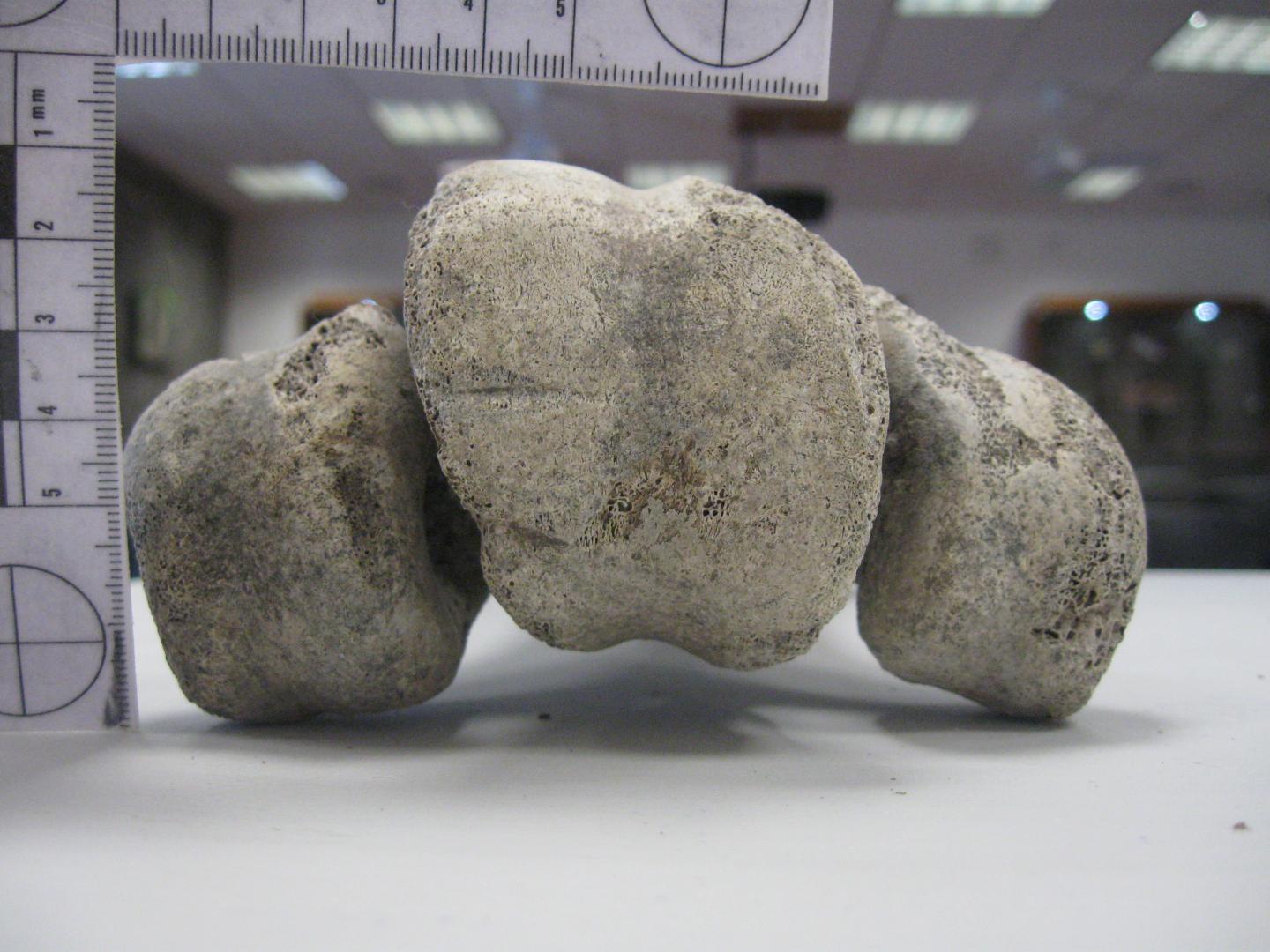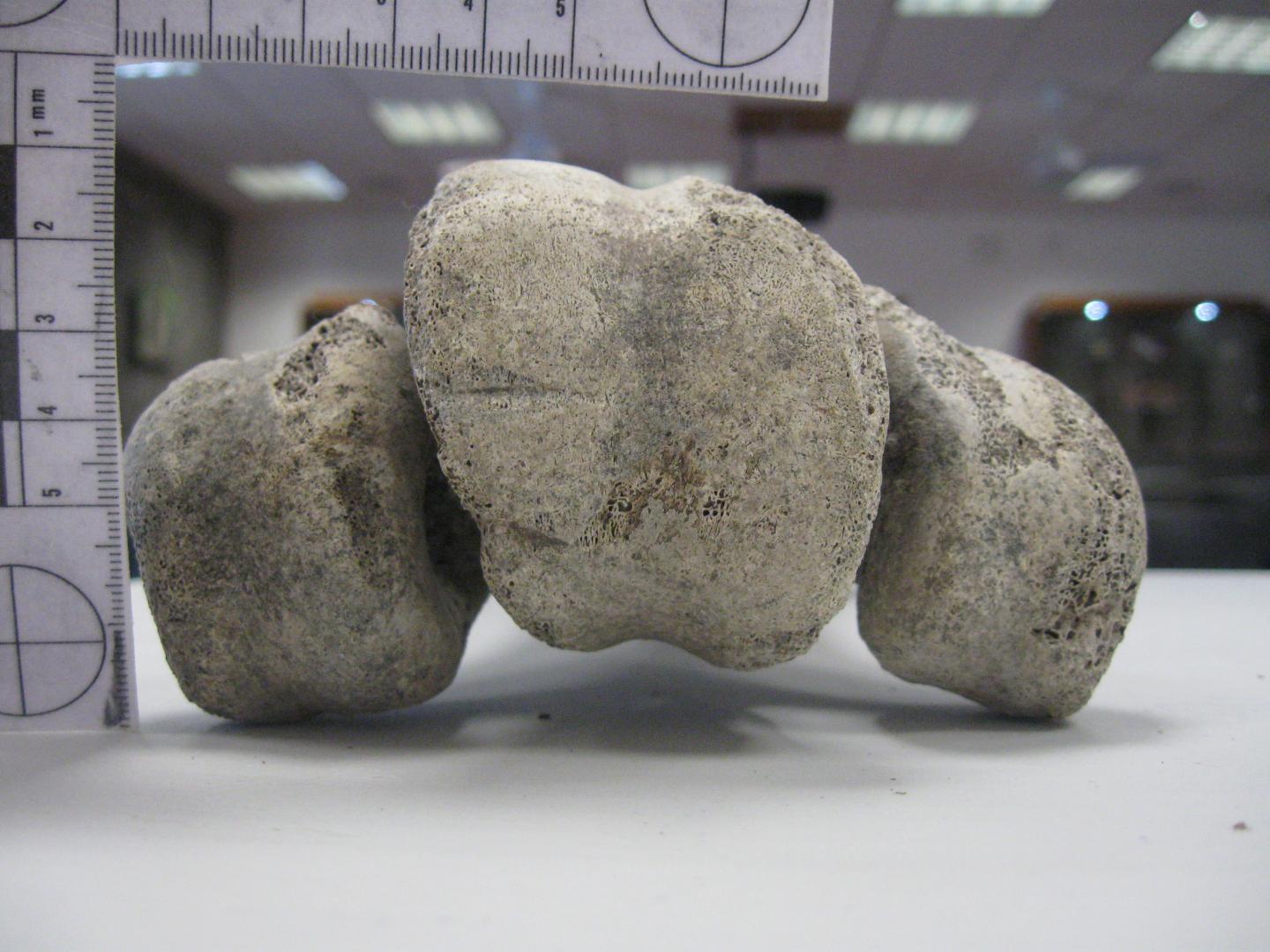
Credit: ZSL
Analysis of bones, from what was once the world's largest bird, has revealed that humans arrived on the tropical island of Madagascar more than 6,000 years earlier than previously thought – according to a study published today, 12 September 2018, in the journal Science Advances.
A team of scientists led by international conservation charity ZSL (Zoological Society of London) discovered that ancient bones from the extinct Madagascan elephant birds (Aepyornis and Mullerornis) show cut marks and depression fractures consistent with hunting and butchery by prehistoric humans. Using radiocarbon dating techniques, the team were then able to determine when these giant birds had been killed, reassessing when humans first reached Madagascar.
Previous research on lemur bones and archaeological artefacts suggested that humans first arrived in Madagascar 2,400-4,000 years ago. However, the new study provides evidence of human presence on Madagascar as far back as 10,500 years ago – making these modified elephant bird bones the earliest known evidence of humans on the island.
Lead author Dr James Hansford from ZSL's Institute of Zoology said: "We already know that Madagascar's megafauna – elephant birds, hippos, giant tortoises and giant lemurs – became extinct less than 1,000 years ago. There are a number of theories about why this occurred, but the extent of human involvement hasn't been clear.
"Our research provides evidence of human activity in Madagascar more than 6,000 years earlier than previously suspected – which demonstrates that a radically different extinction theory is required to understand the huge biodiversity loss that has occurred on the island. Humans seem to have coexisted with elephant birds and other now-extinct species for over 9,000 years, apparently with limited negative impact on biodiversity for most of this period, which offers new insights for conservation today."
Co-author Professor Patricia Wright from Stony Brook University said: "This new discovery turns our idea of the first human arrivals on its head. We know that at the end of the Ice Age, when humans were only using stone tools, there were a group of humans that arrived on Madagascar. We do not know the origin of these people and won't until we find further archaeological evidence, but we know there is no evidence of their genes in modern populations. The question remains – who these people were? And when and why did they disappear?"
The bones of the elephant birds studied by this project were originally found in 2009 in Christmas River in south-central Madagascar – a fossil 'bone bed' containing a rich concentration of ancient animal remains. This marsh site could have been a major kill site, but further research is required to confirm.
###
For more information on the work ZSL is doing to conserve Madagascar's wildlife, visit http://www.zsl.org
J. Hansford, P. C. Wright, A. Rasoamiaramanana, V. R. Pérez, L. R. Godfrey, D. Errickson, T. Thompson, S. T. Turvey, Early Holocene human presence in Madagascar evidenced by exploitation of avian megafauna. Science Advances. 4, eaat6925 (2018). http://advances.sciencemag.org/content/4/9/eaat6925
Notes to editors
Media contact
Emma Ackerley, [email protected] / +44 (0)20 7449 6288
Related images available here: https://zslondon.sharefile.com/d-s33e3cbc1aa84e64b
Madagascan Elephant birds (Aepyornis and Mullerornis)
The extinct elephant birds were flightless megafaunal birds, which were once widespread on Madagascar. They weighed at least 500kg and stood at around 3m tall. It is thought that one of their giant eggs could have fed an entire family.
The elephant bird bones from Christmas River were dated using AMS radiocarbon dating (Accelerated Mass Spectrometry Radiocarbon dating). They are now held at the Smithsonian Institution in Washington, DC.
ZSL
ZSL (Zoological Society of London) is an international conservation charity working to create a world where wildlife thrives. From investigating the health threats facing animals to helping people and wildlife live alongside each other, ZSL is committed to bringing wildlife back from the brink of extinction. Our work is realised through our ground-breaking science, our field conservation around the world and engaging millions of people through our two zoos, ZSL London Zoo and ZSL Whipsnade Zoo. For more information, visit http://www.zsl.org.
Stony Brook University
Stony Brook University, widely regarded as a SUNY flagship, is home to an exceptionally diverse student body of more than 25,700 high-achieving students. Stony Brook offers more than 200 undergraduate programs, more than 100 master's programs and more than 40 doctoral programs. Innovative programs include a combined-degree fast-track MBA program and the award-winning Undergraduate Research and Creative Activities (URECA) program, which involves undergraduates in research in nearly every discipline and has produced Fulbright, Beckman, Goldwater, Marshall and Truman scholars. For more information visit https://www.stonybrook.edu/
Use of ZSL Images and Video
Photographs, video or graphics distributed by ZSL (Zoological Society of London) to support this media release may only be used for editorial reporting purposes for the contemporaneous illustration of events, things or the persons in the image or facts mentioned in the media release or image caption. Reuse of the picture or video requires further permission from the ZSL press office.
General Data Protection Regulation (GDPR)
You are currently on the Zoological Society London (ZSL) databases as a press contact. We class press contacts as the journalists, press officers and those working within science communications who have helped ensure the ZSL can continue its mission to ensure the public have access to the best scientific evidence and expertise through the news media when science hits the headlines. Due to the new General Data Protection Regulation (GDPR), we are letting you know that we hold and process your data under legitimate interest. At any time you can object to the holding or processing of your data, and we will remove you from our database. More information on what we hold, why we keep it and what we use it for is available in our privacy statement.
If you have any further questions, please get in touch.
Media Contact
Emma Ackerley
[email protected]
44-020-744-96288
@OfficialZSL
http://www.zsl.org





